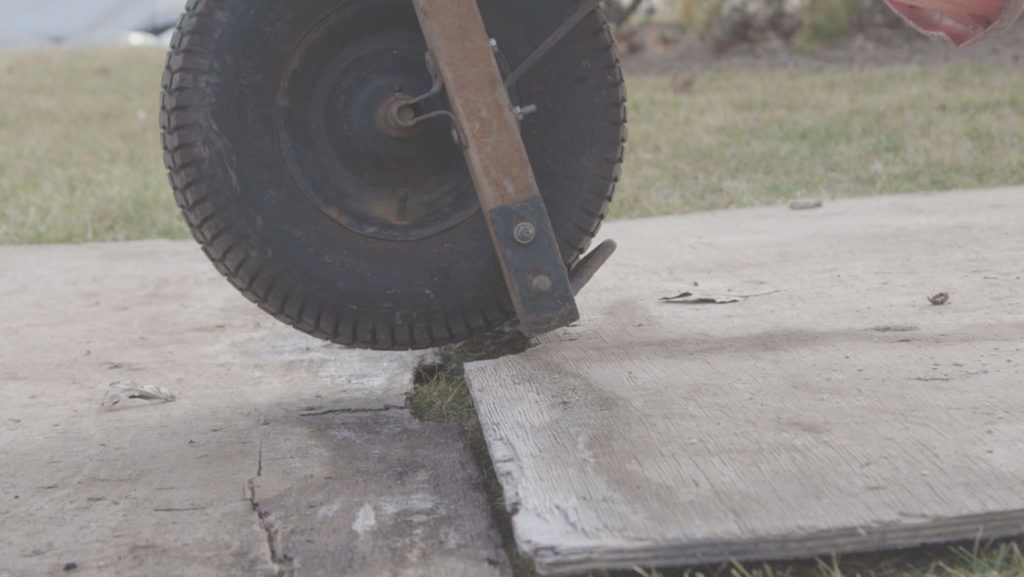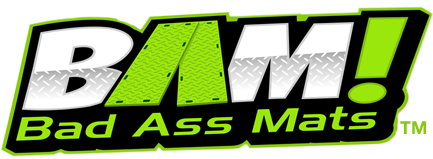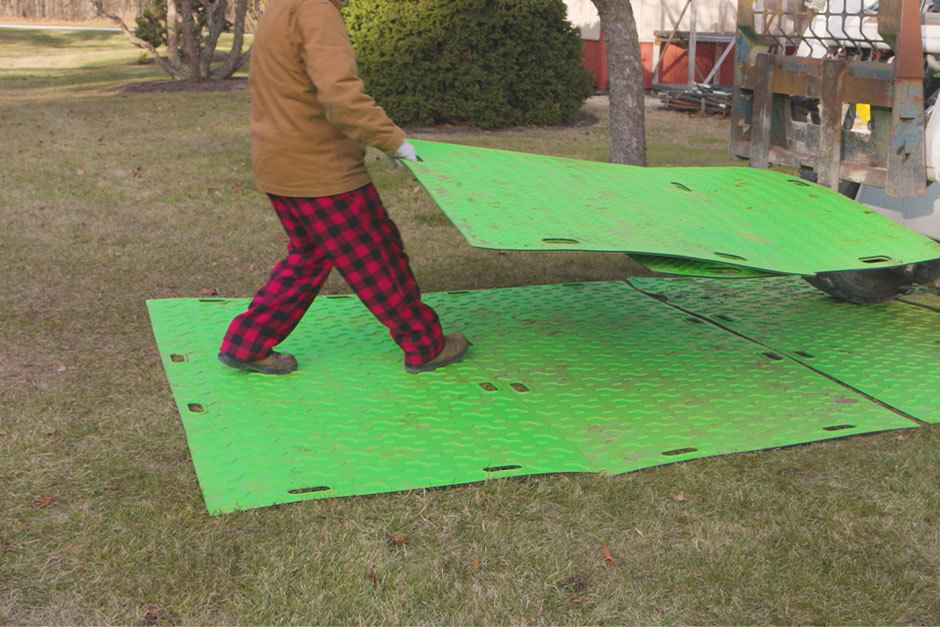When contractors need to protect the existing lawn, driveway, patio and sidewalk they are working around, they often turn to sheets of plywood. But plywood can be a big pain in the ass. Nowadays, more contractors are finding out that there is a badass alternative.
Rustic Road Landscaping is one of those contractors. The Burlington, Wisconsin-based company has been using Bad Ass Mats (BAM!) since March 2022. Buck Bonham, construction foreman, says his crews noticed a difference immediately.
“These mats are so much easier to carry and load into a truck,” Bonham says. “The durability has also been impressive. After an entire season of use, there hasn’t been any fading, cracking or bending. A sheet of plywood would be showing some serious wear by now.” Easier to handle
Bonham says he and his employees appreciate the fact that a BAM! mat is lighter than plywood. A 4×8 mat weighs 56 lbs., whereas a sheet of 3/4” plywood generally weighs around 60. But the big difference happens over time. Plywood starts adding weight by absorbing moisture and mud. A high-strength plastic BAM! mat doesn’t.
BAM! mats are also easier to handle. They feature integrated handholes which make them easier to pick up and carry around. Of course, a user could always grab a saw and try cutting out holes in their sheets of plywood. But how much time would that take, and how smooth would those handholes be?
Plywood is already prone to leaving splinters. “Plywood sheets always break on the edges,” Bonham says. “So when you’re handling them over and over on your jobsites, you’re always catching splinters. At some point, this stuff is going to wind up in your hand. The biggest one I ever had to pull out was over an inch long.”

The integrated handholes on a BAM! mat provide another advantage. Bonham likes to run a cable or rope through the handholes to help hold the mats together in a stack, which makes them very easy to transport on a truck or trailer. Plywood sheets tend to shift and slide all over the place. More durable and functional
BAM! mats are made of HDPE plastic which is strong and durable, resists cutting and fading, withstands extreme temperatures, and will not absorb moisture.
“The biggest drawback to using plywood was that we were having to throw a sheet out every couple of years,” Bonham says. “The whole point of using ground protection is to run heavy equipment on it. Plywood breaks, so that just doesn’t work.”
The potential of a plywood sheet causing damage to a piece of equipment was another big risk. As Bonham explains, plywood is very rigid. As it lies on a surface that is even slightly uneven, certain corners start to pop up off the ground. There were instances where the plywood became lodged in the track of the equipment. That caused downtime by having to stop and dislodge the plywood. More importantly, it ran the risk of causing damage to an expensive piece of machinery.
Another drawback to plywood is that it is flat and can become slippery. The completely flat surface can also leave more of an impression on a lawn, particularly when the grass is wet.
“Then we have more work at the end of the job because we have to go back with rakes and a leaf blower to fluff up the grass again,” Bonham says. “With BAM! mats, we don’t have to worry about that happening.”
BAM! mats benefit from a twin-sheet design, a unique technique where two sheets of plastic are joined together during the thermoforming process. This design allows each side of the mat to have its own characteristics. Thus, one side of a BAM! mat has a tread pattern designed specifically for equipment, while the other is designed for pedestrian traffic. Less expensive in the long run.

Bonham says the only potential drawback to a BAM! mat is the upfront expense, as it does cost more than a comparably sized sheet of 3/4” plywood. But as Bonham relates, payback is typically within two years because you don’t have to continually replace those worn out sheets of plywood. More importantly, the time and aggravation a crew will save will add up quickly.
Want to learn more about how BAM! can help your crews protect the lawns, driveways, patios and sidewalks they’re working around?
Visit BamGroundPro.com today!

